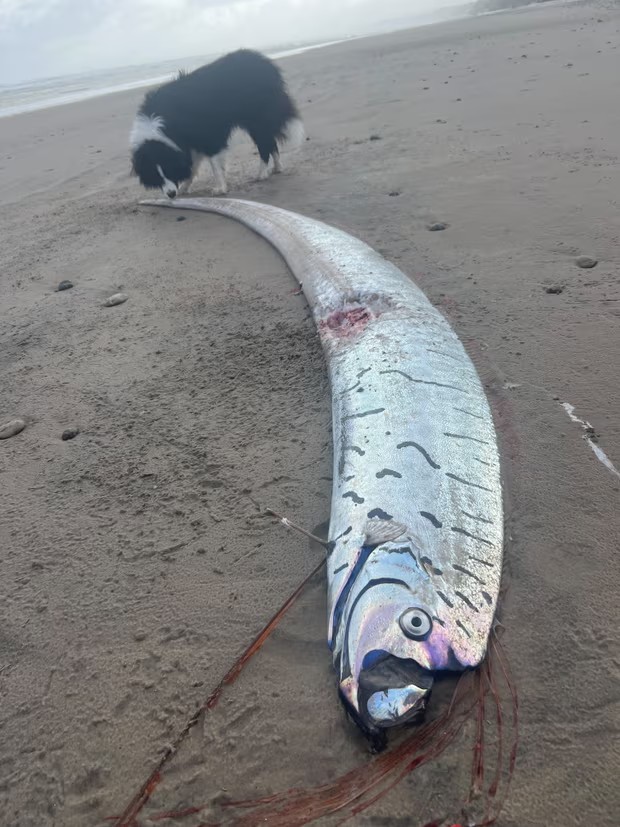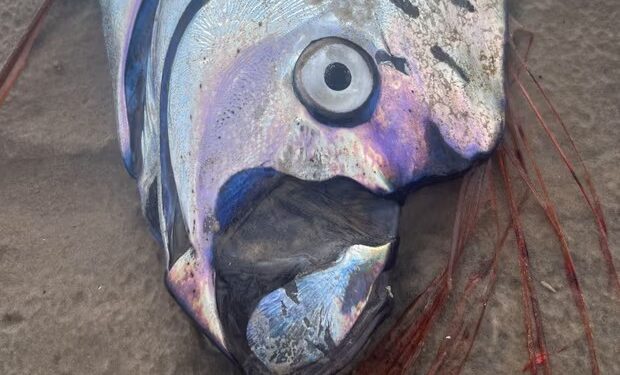A rarely seen oarfish, often nicknamed the ‘doomsday fish’ for its deep-sea mystery and folklore associations with natural disasters, has washed ashore on the remote west coast of Tasmania. Measuring nearly 4 metres in length, the silvery creature was discovered by surprised locals near Strahan, raising eyebrows both for its size and the ominous symbolism long tied to its appearance.
The oarfish, a deep-sea dweller rarely spotted alive, is the world’s longest bony fish and typically resides at depths of up to 1,000 metres. Its ribbon-like body and shimmering appearance have inspired legends for centuries, particularly in Japanese culture, where its surfacing has been linked to seismic activity and tsunamis. While scientists dismiss these claims as superstition, the fish’s elusive nature ensures it draws public fascination whenever it appears.
Marine experts from the University of Tasmania confirmed the species as Regalecus glesne and said it was likely brought in by strong undercurrents or storm activity. “They are delicate animals and don’t survive long in shallow waters,” said marine biologist Dr Lucy Hart, who examined the specimen. “This one was relatively intact, which is rare—we often only see fragments when they reach shore.”

Locals who came across the fish said they were stunned by its size and unearthly appearance. “We thought it was a piece of driftwood at first, then saw the eye and knew it was something different,” said David Greene, a tour operator in the area. “It felt like something from another world.”
Though its presence is not necessarily an omen of disaster, the event comes at a time of heightened seismic activity in the region. Southern Australia has recorded several small tremors in recent weeks, though experts stress there is no proven link between oarfish sightings and tectonic events.
Still, the myth persists. In 2011, multiple oarfish washed ashore in Japan months before the Tōhoku earthquake and tsunami, fuelling popular belief in the creature’s prophetic power. Since then, its rare appearances have sparked viral headlines, with each sighting met with a mix of awe, curiosity, and apprehension.
In scientific circles, oarfish are seen more as indicators of deep-ocean health than of impending disaster. Their surfacing can point to shifts in temperature, oxygen levels, or other disruptions to their usual habitat. As climate change continues to alter ocean conditions, more encounters with deep-sea species may become likely, even in remote places like Tasmania.
For now, the Strahan oarfish will be preserved for study, offering a rare opportunity to examine one of nature’s most enigmatic giants. As one researcher put it, “It’s a reminder of how little we still know about the deep sea—and how extraordinary it is when it rises to meet us.”
newshub finance



Recent Comments